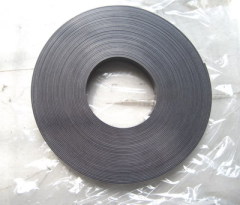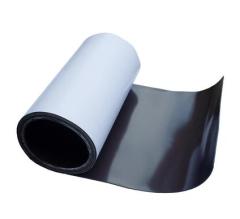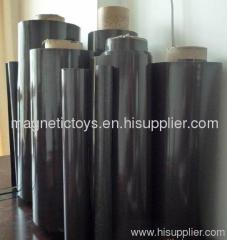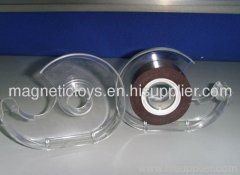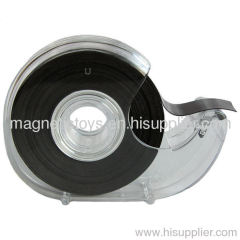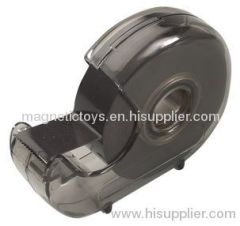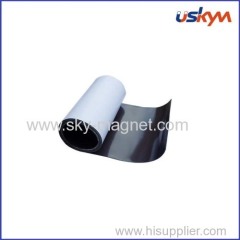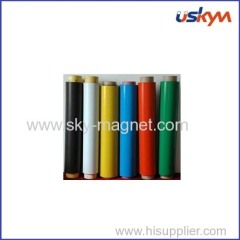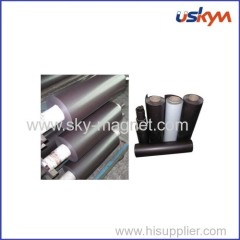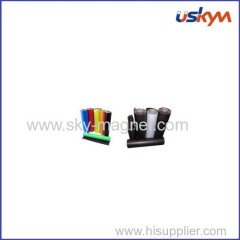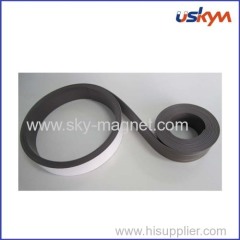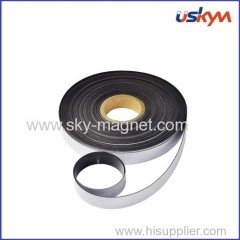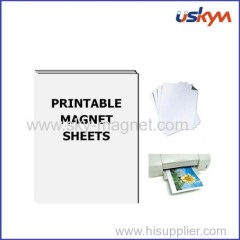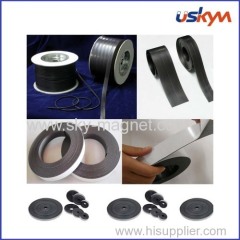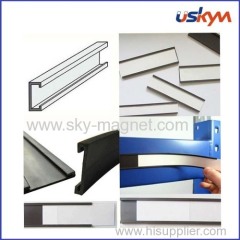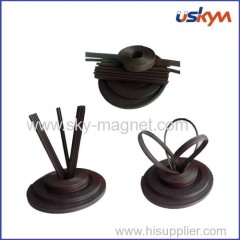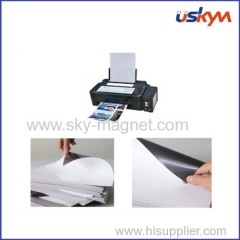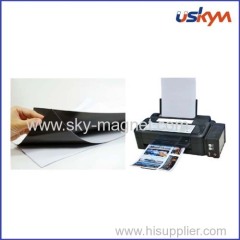
|
Sky Magnetech (Ningbo) Co., Ltd.
|
soft multipolar rubber magnet
| Price: | 0.5~50.0 USD |
| Payment Terms: | T/T,L/C,WU,Paypal |
| Place of Origin: | Zhejiang, China (Mainland) |
|
|
|
| Add to My Favorites | |
| HiSupplier Escrow |
Product Detail
soft multipolar rubber magnet
softmultipolar rubber magnet
We will offer good service for you.If you have any question,we will do our best to help you to solution.
NdFeB magnetis in different grades, shapes and sizes.
Good quality, best service, reasonable price.
Good quality, best service, reasonable price.
Specifications
1) high quality NdFeb materials
2) customized size & accurate tolerance
3) fast and safe delivery & excellent service
2) customized size & accurate tolerance
3) fast and safe delivery & excellent service
Properties of Selected Magnetics Materials
This chart presents some of the magnetic properties of a subset of magnetic materials:
This chart presents some of the magnetic properties of a subset of magnetic materials:
Maxium Energy Product Bhmax(MGOe) | Residual FluxDensity Br(G) | Coercive Force Hc(Koe) | Working Temperature °c | |
| Ceramic 5 | 3.4 | 3950 | 2400 | 400 |
| Sintered Alnico5 | 3.9 | 10900 | 620 | 540 |
| Cast Alnico 8 | 5.3 | 8200 | 1650 | 540 |
| Samarium Cobalt 20(1.5) | 20 | 9000 | 8000 | 260 |
Samarium Cobalt 28 (2,17) | 28 | 10500 | 9500 | 350 |
| Neodymium N45 | 45 | 13500 | 10800 | 80 |
| Neodymium 33UH | 33 | 11500 | 10700 | 180 |
Warnings:
Neodymium magnets attract each other with almost twice the force that they use to attract
steel objects.They also attract each other through very large distances, even small
magnets will attract each other through the thickness of your finger!
About NdFeB magnet:
Neodymium iron boron ( NdFeB) is a type of rare earth magnetic material.
NdFeB is the most advanced commercialized permanent magnet material available today.
NdFeB is the most advanced commercialized permanent magnet material available today.
This material has similar properties as the samarium cobalt except that it is more easily oxidized
and generally doesn't have the same temperature resistance.
However, NdFeB magnets have the highest energy products approaching 52MGOe and are
However, NdFeB magnets have the highest energy products approaching 52MGOe and are
mechanically stronger than samarium cobalt magents. NdFeB material is more costly by weight than
ceramic or alnico but produces the highest amount of flux per unit of volume or mass amking it very economical for many applicantions. Their high energy products lend themselves to comnpact designs
that result in innovative applications and lower manufacturing costs.
Unprotected NdFeB magnets are subject to corronsion. Surface treatments has ben developed that
Unprotected NdFeB magnets are subject to corronsion. Surface treatments has ben developed that
allow them to be used in most applications. These treatments include copper, silver,, gold, nickel,
zinc and tin plating and epoxy resin coating.
Beneficial characteristics of NdFeB magnets include their very high energy product, very high
Beneficial characteristics of NdFeB magnets include their very high energy product, very high
coercive force, and moderate temperature stability. Drawbacks include lower mechanical strength,
and low corrosion resistance when not properly coated or plated.
Magnetic Grades and Temperature:
The Grade of a magent directly refers to the Maximum Energy Product of the material that composes the magnet. It in no way refers to the physical properties of the magnet. Grade is generally used to describe
how "strong" a permanent magnet material is. The energy products is specified in the unites Gauss Oersted.
One MGOe is 1,000,000 Gauss Obersted. A grade forty (N40) would have a Maximum Energy Product of 40 MGOe.The higher the grade the "stronger" the magnet.
Magnetic materials have a wide range of working temperatures. The following chart the various materials and their maximum working temperature. NdFeB material
comes in many different heat tolerances but as the heat tolerance increases the maximum available fulx density decreases:
comes in many different heat tolerances but as the heat tolerance increases the maximum available fulx density decreases:
| Description | Magnet |
| Material: | NdFeB magnet |
Woking Temperature | Grade | Max.Operating Temperature |
| N35-N52 | 80°c | |
| 33M-48M | 100°c | |
| 33H-48H | 120°c | |
| 30SH-45SH | 150°c | |
| 30UH-40UH | 180°c | |
| 28EH-38EH | 200°c | |
| 28AH-35AH | 220°c |
| Surface | Coating | Thinkness(Microns) | Color | Resistance |
| Passivation | 1 | silver grey | Temporary Protection | |
| Nickel | Ni+Ni | 10-20 | bright silver | excellent against humidity |
| Ni+Cu+Ni | ||||
| Zinc | Zn | 8-20 | bright blue | good against salt spray |
| C-Zn | shinny color | excellent against salt spray | ||
| Tin | Ni+Cu+SN | 15-20 | silver | Superior Against Humidity |
| Gold | Ni+Cu+AU | 10-20 | gold | superior against humidity |
| Copper | Ni+Cu | 10-20 | gold | Temporary protection |
| Epoxy | epoxy | 15-25 | black, red, grey | excellent against humidity and salt spray |
| Ni+Cu+epoxy | ||||
| Zn+epoxy | ||||
| Chemical | Ni | 10-20 | Silver grey | excellent against humidity |
| Parylene | parylene | 5-20 | grey | excellent against humidity, salt spray, superior against solvents, gases, fungi and bacteria |
Magnetic Orientations
Magnets can be delivered magnnetized and un-magnetized. Many automated production methods rely on the magnets being incorporated into assemblies in a un-magnetized state and later magnetized once the assembly is completed.
A magnet can be magnetized in a variety of directions. The diagrams below depict various magnetic orientations available for magnets. Anisotropic materials must be magnetically oriented during the production of material. They therefore are inclined to a fixed orientation.
The radial orientations below are difficlut to produce and currently only available in some isotropic materials.
Magnets can be delivered magnnetized and un-magnetized. Many automated production methods rely on the magnets being incorporated into assemblies in a un-magnetized state and later magnetized once the assembly is completed.
A magnet can be magnetized in a variety of directions. The diagrams below depict various magnetic orientations available for magnets. Anisotropic materials must be magnetically oriented during the production of material. They therefore are inclined to a fixed orientation.
The radial orientations below are difficlut to produce and currently only available in some isotropic materials.
Applications
Magnets are prevasive in the moden environment. From the humblue refrigerator magnet to the Hubble space Telescope, magnets impact almost every aspect of our lives. Magnets are part of most everyday electronic devices. You'll find magnets in almost every device with an electronic motor. Televisions, computers, autombiles, loud speakers, cell phones, and microwave ovens, all use magnets. Magnets are used to keep kitchen cabinet doors closed, are part of the sensors in home alarm systems, are palced in cows stomachs to catch barbed wire and nails, are used in magnetic resonance imaging systems, are used to slow elevators, roller coasters and subways, and in ountless other devices. Because of the broad used of magents it is difficlut to provide a definitive list of all other applications. However, the bulk of magnets manufactured today are used primarily in holding applications and electro-motive applications.
Magnets are prevasive in the moden environment. From the humblue refrigerator magnet to the Hubble space Telescope, magnets impact almost every aspect of our lives. Magnets are part of most everyday electronic devices. You'll find magnets in almost every device with an electronic motor. Televisions, computers, autombiles, loud speakers, cell phones, and microwave ovens, all use magnets. Magnets are used to keep kitchen cabinet doors closed, are part of the sensors in home alarm systems, are palced in cows stomachs to catch barbed wire and nails, are used in magnetic resonance imaging systems, are used to slow elevators, roller coasters and subways, and in ountless other devices. Because of the broad used of magents it is difficlut to provide a definitive list of all other applications. However, the bulk of magnets manufactured today are used primarily in holding applications and electro-motive applications.
RelevantShipping Advantage:
1) Appointed forwarder is welcome
2) We can ship by express, air & sea
3)We have big discount on our won forwarder, and mainly world-wide express such as : DHL, UPS, Fedex
Didn't find what you're looking for?
Post Buying Lead or contact
HiSupplier Customer Service Center
for help!
Related Search
Soft Magnet
Soft Rubber
Rubber Magnet
Magnet Rubber
Soft Ferrite Magnet
Soft Pvc Fridge Magnet
More>>







